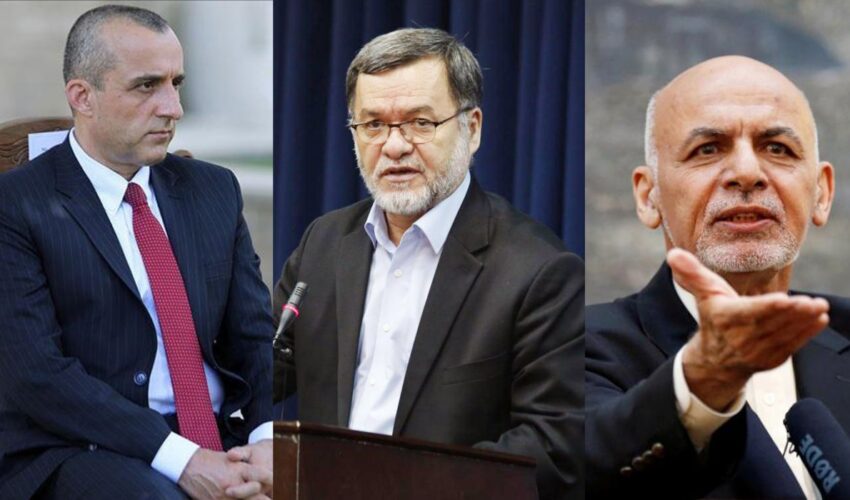Role of Leadership in Afghanistan’s Failure

By: Fawad Nazami
Despite two decades of national and international efforts, the democratic government of Afghanistan collapsed in August 2021. A three-level analysis is often used as a suitable framework for studying the success and failure of a state. The first level is the domestic factors. Issues such as functioning national institutions, level of education, national awareness, strong civil society, and convergence of values among people are parts of the domestic factors. The second level is the systemic factors, consisting of external influences over national autonomy, such as the regional balance of power, regional security texture and structure, geographical location, and relations with neighboring countries. The third level, which is the article’s focus, is the leadership role. Issues such as a stateman’s ideology, principles, beliefs and values, personality traits, competency, vision, leadership skills, integrity, and power to influence the national and external factors are part of the leadership roles in shaping a thriving or a failed state.
In any country, the role of leadership is influential in shaping the state’s behavior, determining the state’s intentions, and employing the state’s resources to achieve strategic goals. Leaders can either make their countries prosper or fail and create a disastrous situation for their countries. This article argues that poor leadership was one of the main factors that drove Afghanistan toward a total collapse and paved the way for the return of the Taliban.
In shaping state strategic goals towards development and success, a functioning system of governance, the rule of law, a robust civil society,
and professional law enforcement agencies is essential. Afghanistan started building its national institutions, legislation, and governance in 2002. Afghanistan was in the process of state-building, and the so-called domestic factors were too young and weak to play their roles in preventing failure and collapse.
Meanwhile, Afghanistan has had border disputes with Pakistan at the systemic level.
Afghanistan’s military power was weaker than its Pakistanis rival, and there was a power imbalance between the two countries. Iran, the other neighboring country, was against the western focused democratic system in Afghanistan and, at the same time, against western military presence near its borders. Other regional countries, China and Russia, were concerned about the presence of the West in Afghanistan and therefore did not play a constructive role. The US and NATO, the prominent supporters of Afghanistan’s National Security Forces, decided to withdraw from Afghanistan without a comprehensive plan to support and endure the post-withdrawal endurance of Afghanistan’s National Security Forces. These systemic factors also played their roles in disrupting the development and stability of Afghanistan.
However, in countries where domestic factors, national institutions, legislations, law enforcement agencies, and civil societies are weak, statemen have more spaces to play their roles. They are more powerful and have free hands to employ national resources for their goals. During their presidency, Hamid Karzai and Ashraf Ghani had full autonomy to utilize Afghanistan’s national resources for their individual or group ambitions. After the 2001 Bon Conference, the International community fully supported Hamid Karzai in establishing a functioning government in Afghanistan. Afghans were also supporting Hamid Karzai as their new leader in the hope of a better future for their country and their children.
A successful leader should have competence, vision, and skills to utilize national resources for the country’s strategic goals and national interests. Afghanistan post-2001 needed national strategic plans to draw a comprehensive roadmap for state building and development of the country. Hamid Karzai was a conservative leader who wished to please every Afghan tribal and local leader. Afghanistan of post-2001 had a golden opportunity and immense western political and financial support to start and build up a functioning government that could serve Afghans all over the country. During his presidency, Hamid Karzai spent too much time and resources to secure the support of local leaders, including the warlords and regional powerhouses. He was good at playing the role of a tribal leader, but leading a country was beyond what he could handle. Hamed Karzai lacked a long-term strategy and a clear vision for Afghanistan. He never believed in national institutions and the importance of their roles to enforce laws and serve the nation. In the presence of Afghanistan’s Ministry of Interior, the principal law enforcement institution, President Karzai, was accrediting religious clerks and even paying them compensation to maintain orders at the local and district levels. He was referring local disputes and even criminal cases to religious leaders to resolve and find a solution for these cases. President Karzai was violating national laws by establishing hundreds of commissions composed of corrupt entities to carry out the responsibilities of law enforcement agencies. These behaviors of President Karzai and the lack of competency to form a national functioning system of governance disrupted and further weakened the process of state building and law enforcement in Afghanistan. This failure also led people to lose trust and faith in national institutions and the rule of law.
On the other hand, President Ghani had a strong sense of egotism, narcissism, anger, and ethnocentrism. He started his tenure by criticizing Hamid Karzai’s method of leadership and promised to develop a national system of governance that could bring security and prosperity to Afghanistan. However, narcissism shaped his plans and his method of administration. In the first six months of his presidency, he created an environment where most of those who were integral to his campaign and his closest allies started to walk away. Vice president Abdul Rashid Dostom left his office, and many cabinet members resigned, or he fired them. In his weekly meetings with his cabinet members, President Ghani lectured everyone and was never open to listening to any critical opinion or suggestions. The minute one of his ministers was about to raise an issue, he stopped the voice, responding aggressively and accusing the minister of incompetence. This behavior led to management chaos in his administration. At the end of his administration, he was very insecure and lonely. He grew an even more micro-manager to the extent that he started contacting local district-level police officers and explaining the ToR of a district police officer to them.
Narcissism was also shaping his behaviors towards regional neighboring countries. While Afghans were starving inside Afghanistan, President Ghani lectured Pakistanis authorities on advancing Pakistan’s economy. While Afghan farmers could not transport their products from remote areas to the cities due to a lack of roads and physical connection between cities, President Ghani advised Central Asian countries to a regional transportation hub and regional connectivity.
National leaders are only successful if they lead with trust, patience, influence, and respect. Nelson Mandela’s patience, vision for justice, inclusive approaches, and skills to secure his opponents’ confidence enabled him to form a successful and enduring democracy.
Different state leaders may choose different policies in coping with challenges. Sadam Hussain of Iraq was aggressive and reckless, whereas Hafiz Asad of Syria was a cautious leader. Whenever Sadam confronted a difficult situation, he chose the most reckless of all available options and behaved aggressively. Sadam’s behaviors played destructive roles in Iraq’s socioeconomic development. People were frustrated and were relieved once he was removed from power. Hafiz Asad, on the other hand, played a constructive role in the socioeconomic development of Syria.
President Ghani’s policy was leadership with anger. He led a democratic government with personal autocracy. He could not tolerate any criticism of his leadership and policies. He was even responding furiously to criticism from Afghan media. In an interview with the Tolo TV correspondent, he once retorted, “What is your problem? Why do you ask this question?
President Ghani was not leading based on realities on the ground. He was trying to make national policies following general scholarly statecraft theories. His speeches were full of academic hypotheses and theories, relying on faulty data and skewed statistics. When he read in a book that tourism plays an influential role in the economic development of a country, he used it in his speech. He declared to Afghans that Afghanistan is going to host millions of tourists, unaware of the fact that Afghanistan’s national airports are not capable of receiving more than a thousand passengers a day or unaware of the fact that there are no basic infrastructures like hotels, transportation services and other services that can attract and facilitate tourists to choose Afghanistan as their next destination. President Ghani’s sense of ethnocentrism was shaping his behavior and national policies. He was under pressure from the international community to combat corruption in the country. Still, he politicized the anti-corruption campaign to the extent that everyone lost faith in the intentions and effectiveness of those efforts. He selectively targeted his political opponents within the administration under the name of fighting corruption while putting a blind eye to the evident corruption of officials in his closest circles. He marginalized his government’s non-Pashtun ministers and authorities. The Ministry of Foreign Affairs of Afghanistan, led by Salahuddin Rabbani, was marginalized from contributing to anything related to foreign policy -entirely on made-up accusations. The Ministry of Finance, led by Qayoumi, was a de-facto Prime-Ministership involved in all governance issues at all levels. President Ghani’s narcissistic, individual-interest-motivated, hypocritic behaviors further damaged national unity among Afghans. Afghanistan lost opportunities to form a stable democracy and a functioning government. He abused and manipulated national resources for purely personal agendas, and high levels of corruption created huge gaps between people and the government. President Ghani’s disastrous leadership divided National Security forces into ethnocentric groups. National values lost meaning, and Afghan National Security Forces lost their morals and purpose to sacrifice their lives against a ruthless and reckless enemy.

Barakat Rahmati

Nazeela Elmi

Ahmad H. Najmpoor





